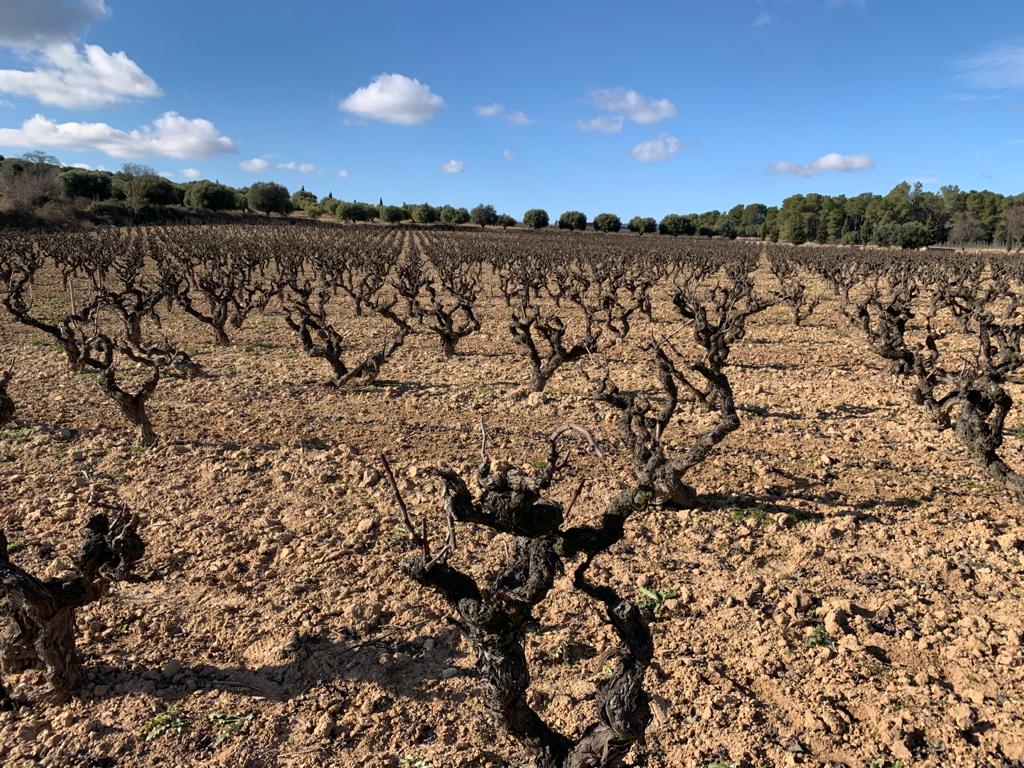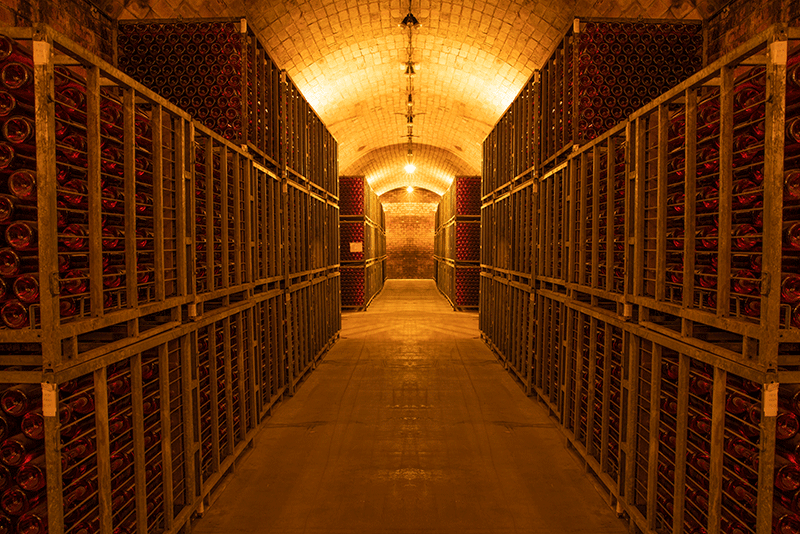At the Can Parellada estate, winter is a special time. It may seem that not, because the vineyards are in the dormant phase, the vines have lost leaves and the frenzy typical of the harvest is already far behind us. However, many of the actions that take place in winter in the vineyards and in the winery determine the future of our wines and cavas. It is time to listen to the land, to decide, to prepare, to evaluate … The cycle continues! We explain what happens during the months of December and January in the Cavas Naveran vineyards.
It is the time of pruning in Cavas Naveran
After the harvest, the vineyards need to rest: we are in the vegetative stop of the plant. But the Cavas Naveran team does not stop! It is the time of pruning. As we said, the actions that are carried out now are important for the future. For example, pruning determines the quantity and quality of the grape and, therefore, the character of the wines and cavas. At Naveran we carry out short and restrictive pruning to limit the natural growth of the strains. We do it because we do not look for large quantities of wine for the harvest, but rather we want quality grapes; and this is achieved by making the plant produce less, to the benefit of yield.
It is important to prune the vine during the vegetative stop, that is, not to do it before all the leaves have fallen, because the carbohydrate reserves would not have reached the branches yet. This phase can begin, approximately, during the month of November and it will last throughout the winter, until the first shoots appear, between March and April. This gives us a margin to go pruning, but it is necessary to plan the pruning to obtain better results taking into account …
1. Weather conditions: if we can later, we will delay the growth of the first shoots and late frosts will not spoil them. We cannot always foresee it, but it must be taken into account, especially in vineyards with little sunny areas.
2. The age of the vine: old vines are more sensitive to frost, therefore, we will try to prune them at the end. In addition, as with pruning we are controlling the growth of the plant, we also manage to extend its life.
3. The variety of the grape: the sooner we can, the earlier the first shoots will appear. In the Naveran vineyards, on the one hand, the native white grape varieties of the Penedès are grown, such as macabeu, xarel·lo and parellada. And, on the other hand, the white viognier and chardonnay; and cabernet sauvignon, pinot noir, merlot and syrah inks. Each one needs different care: we start pruning for the earliest varieties, such as chardonnay and pinot noir, because we will harvest them earlier.

Our vineyards in winter receive organic fertilizers
Winter is also a good time to fertilize the soil, in order to provide the vineyards with the necessary nutrients. At Cavas Naveran we use organic fertilizers that come from organic farms. We apply them every two years so that the plant increases its productivity and the grape is of quality, but with control, so that it does not take to much vigor.
Let’s go through the silence and calm of the Naveran cellar
And meanwhile, in the winery the wine and cava production continues. As in the vineyards, during the winter in the Naveran cellar the process does not stop either. We go through the silence and calm of the cellar, where the wines rest in oak barrels and in the bottles each bubble is born to rise a new cava …
The coupage:
In January, our winemaker is immersed in the coupage, which consists of mixing different base wines, playing with the levels of degree or acidity, to achieve the desired balance. These processes form the essence of Naveran. For example, a peculiarity of the Naveran Brut and Nature Vintage cavas is that they contain between 15% and 20% chardonnay, apart from the traditional Macabeu, Xarel·lo and Parellada.
The draft, the start of the second fermentation and the aging:
Once the blend is finished, it will be time to stabilize the cold and run. Then, everything will be ready for the second fermentation to begin, this time inside the bottle, which will rest in the underground calm of the Naveran cellar. It is an ideal place for the aging phase, which begins around the winter months and will end in a year for our Vintage cavas and in approximately two and three years for Premium cavas, such as Perles Blanques.
A curiosity about the aging of Premium cavas: approximately, in the middle of the process, we take the bottle cage and turn it to make a batonnage, so the lees are mixed again. Afterwards, the cavas will rest again until the breeding.
The disgorging and the final set-up:
For the aging to take place, the bottles are placed in the cages to enter them in the gyro-pallet where the cava will rest for months in the darkness of the cellar. Little by little, due to the second fermentation, the carbon is born and is integrated, becoming each bubble that will give rise to a new cava.
After aging, the sediments from the second fermentation precipitate in the neck of the bottle. Disgorgement consists of opening the bottle to eliminate them. At Naveran we disgorge by machine, with the exception of the Magnums (Cavas of one and a half liters) where the whole process is artisan. Finally, the addition of the liquor, the capping and subsequent labeling. The Cavas are now ready for consumption!
Meanwhile, the wines …
The aging wines also rest in the cellar. At Naveran we have about 125 French and American oak barrels for the Manuela de Naveran, Clos Antònia and Don Pablo wines to undergo their aging process.

Everything ready to welcome spring
The winter months in the vineyards are one of patience and perseverance, but also of joy, of looking at the ordered vines after pruning, ready to welcome spring; Or go down to the cellar and smell the aroma of the moment of disgorgement … Who says that winter is not special?


